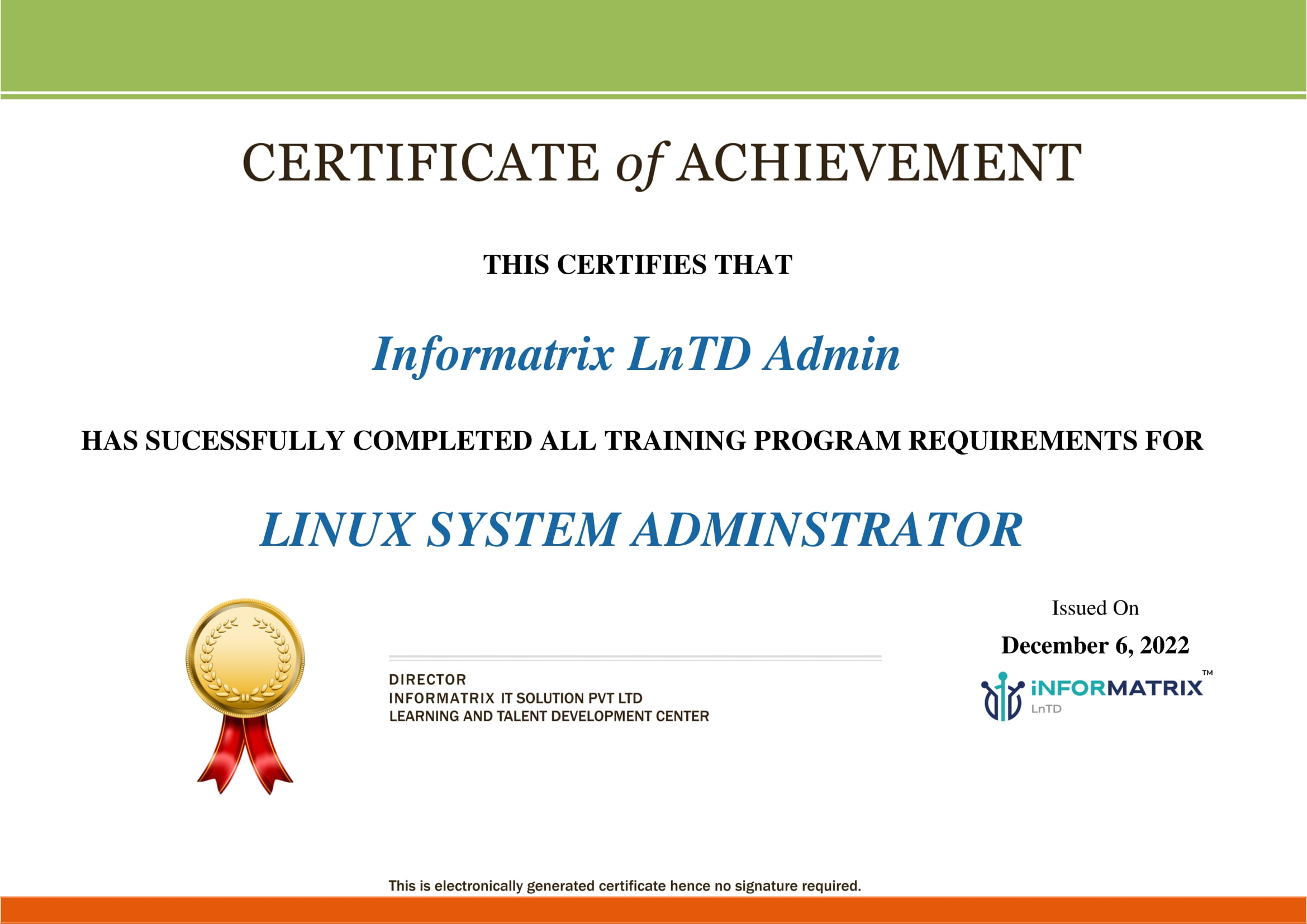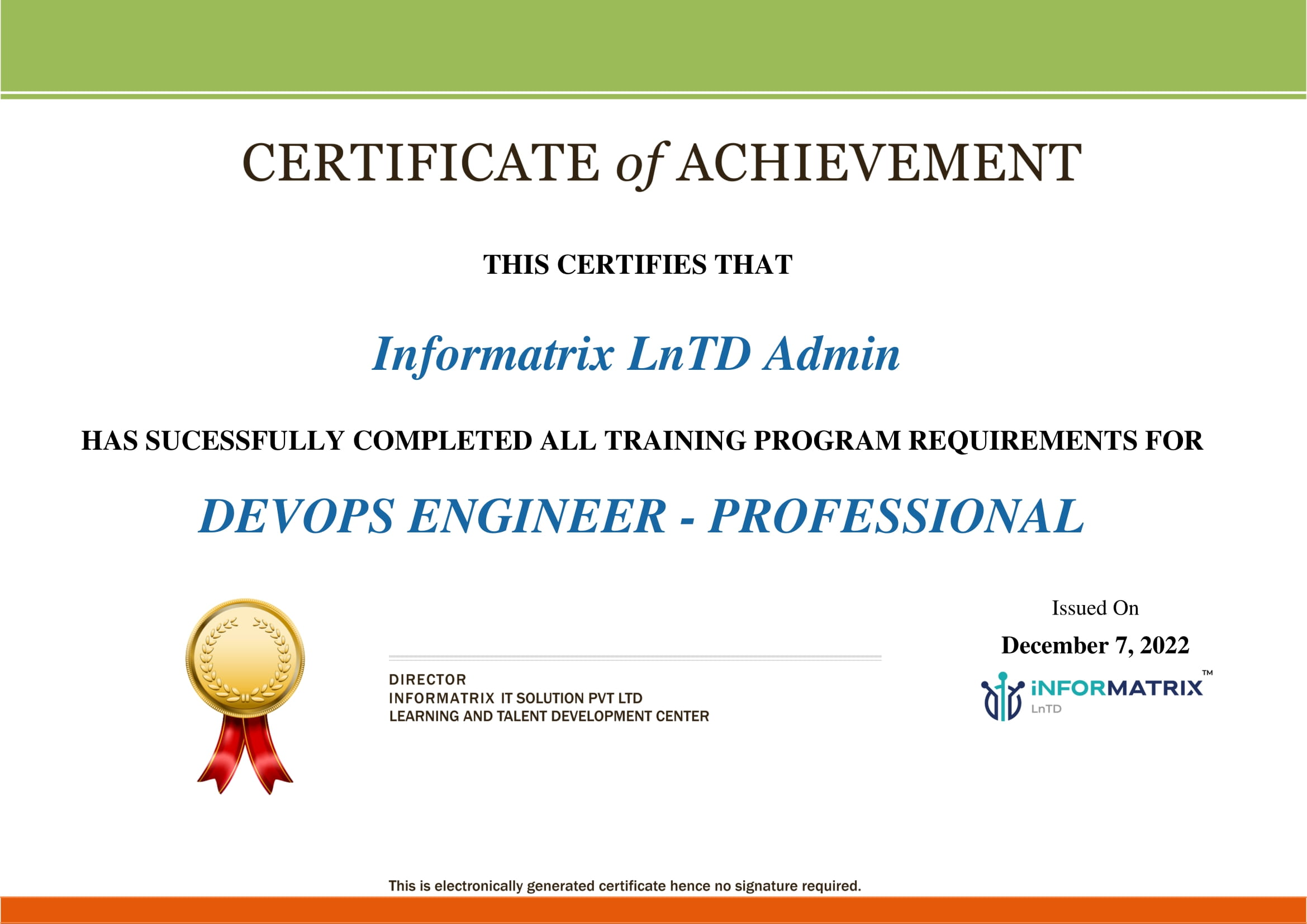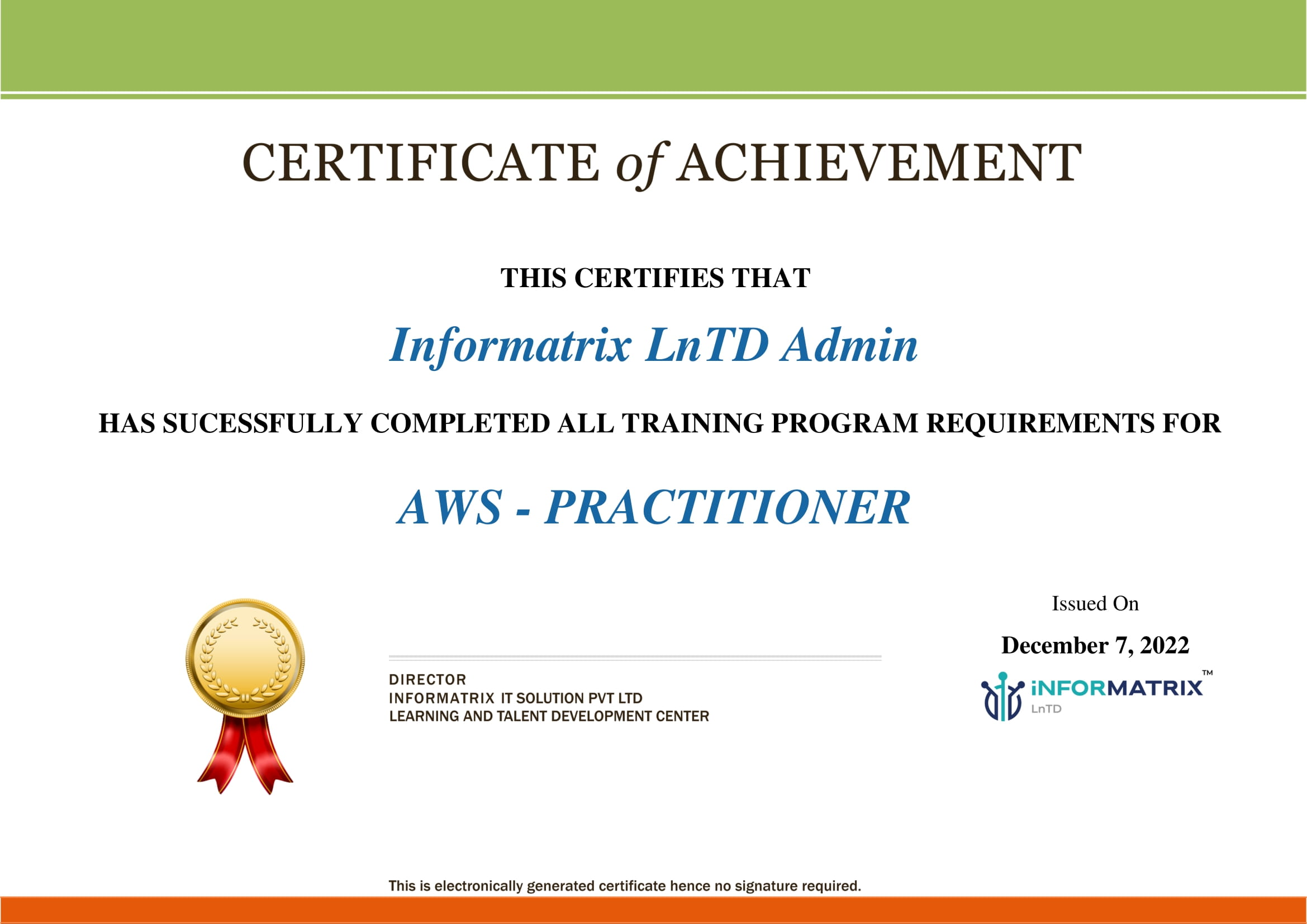Linux System Administrator
- What is Linux?
- The Culture of Free software
- Linux Features and Advantages
- Quick Installation
- The Shell Interface
- Working with the Linux Command Prompt
- Working with the Linux File System Structure
- Using the vi text editor
- Basic Commands
- Advance Commands
- Create/Modify/Delete User and Group Accounts
- Understanding Linux Permission and types
- Working with owner and group permission
- Understand Partitioning Concept in Linux
- Managing File Systems and Disk Space
- Understanding LVM
- Configure and Manage NIC
- Installing Packages Using RPM Package Manager
- Installing Packages Using YUM
- Monitor CPU, Memory Utilization
- Managing System Hardware
- Introduction to WEB Server
- Configure the Apache Server
- Virtual Hosting
- Commands, Users & Group Management, LVM, Permissions
- Binary and Source code package installation
- Setup 4 Tier Architecture Load Balancer, Web, App, DB
DevOps Engineer Professional
- What is DevOps?
- What is SDLC?
- What is CI/CD in DevOps?
- What is continuous integration?
- What is continuous delivery?
- What is continuous deployment?
- What are the varius DevOps tool?
- What is Virtualization?
- What are Containers?
- What is Docker engine?
- Docker Engine Core Components
- Docker on Linux and non-Linux Kernel
- Docker Architecture
- Docker Daemon and Docker Client
- Docker Registry
- Docker Hub
- Docker Commands
- Assignments, Quizzes, Projects
- What is Kubernetes
- What is cloud native
- Install minikube on Linux
- Spin up and explore a minikube cluster
- Reading and writing YAML
- Create namespace
- Deploy an application
- Event Logs
- Application Logs
- Control Plane
- Worker Nodes
- Assignments, Quizzes, Projects
- Introduction to Ansible
- Infrastructure as Code
- Configuration Management
- Benefits of Ansible
- What is YAML?
- Data Structures
- How Ansible Works?
- Ansible Playbook
- Ansible Inventory
- Ansible keywords
- Ansible Modules
- Assignments, Quizzes, Projects
- Introduction to GIT
- Account Management
- What is GitHub
- Git workflow
- GIT Architecture
- GIT Commands
- Introduction to Jenkins
- Features of Jenkins
- Architecture of Jenkins
- Key components in Jenkins
- Jenkins workflow
- Installation of Jenkins
- Jenkins Plugins
- Jenkins Views
- Jenkins slaves
- Jenkins master
- Create a Job in Jenkins
- Get Introduced to Nagios
- Features Unloaded Comprehensive Monitoring
- Architecture of Nagios
- Nagios Configuration
- NRPE
- Event Handlers
- Monitor clients using NRPE
- Understanding of middleware application
- Tomcat Installation and Configuration
- DevOps Project-1
- DevOps Project-2
AWS Cloud Professional
- Getting Started with AWS
- Basic Account Management Setting
- Management of Billing Dashboard & Cost optimization
- Introduction to Identity & Access Management
- Basics of Authentication & Authorization
- Creating and Managing Users & Groups
- Multi-Factor Authentication – [MFA]
- Creating and Managing IAM Policies
- Roles and its use cases
- Basic Account Setting
- Introduction to Elastic Cloud Compute
- EC2 Use cases and important features of EC2 service
- EC2 Instance capacity Reservation
- Security Groups Creation & Management
- EBS (Elastic Block Store) Management
- Manage Network & Security in EC2
- Creation of AMI, Snapshots and Template
- Load Balancer Introduction & Management
- Create and Managed Auto-Scaling and Launch Configuration
- Introduction to Simple Storage Service
- Basics of Storage System
- Storage Services provided by AWS
- S3Versioning, server access logging, Life-Cycle Management
- Object lock, requester pay, Default Encryption, Transfer Acceleration.
- Event Notification & Event Bridge
- Managed policy and permission of s3 bucket
- Difference between Object Storage and Block Storage
- Hosting a Static Website in an s3 bucket
- Introduction to AWS CLI
- Setting Up AWS CLI on local machine
- Creating Users and groups using AWS CLI
- Instance operation perform using CLI
- Introduction to Virtual Private Cloud VPC
- VPC Basics of Networking
- IP Address and CIDR Block
- Subnet and Route Tables
- Internet Gateway and NAT
- VPC Peering
- Endpoints in VPC
- Importance of CloudWatch
- Creating and Managing metrics in CloudWatch
- Creating and Managing Dashboards in Cloudwatch
- Enable Logs and Log agent in Cloudwatch
- Creating and managing Alarms in CloudWatch
- Introduction to Simple Notification Service
- Important Components of SNS
- Creating and Managing Topics in SNS
- Introduction to RDS
- Database Services provided by AWS
- DB engines provided by RDS
- Snapshots, Read Replicas, RDS Security
- Multi-Region Standby RDS server
Certificate students will get after training completion


